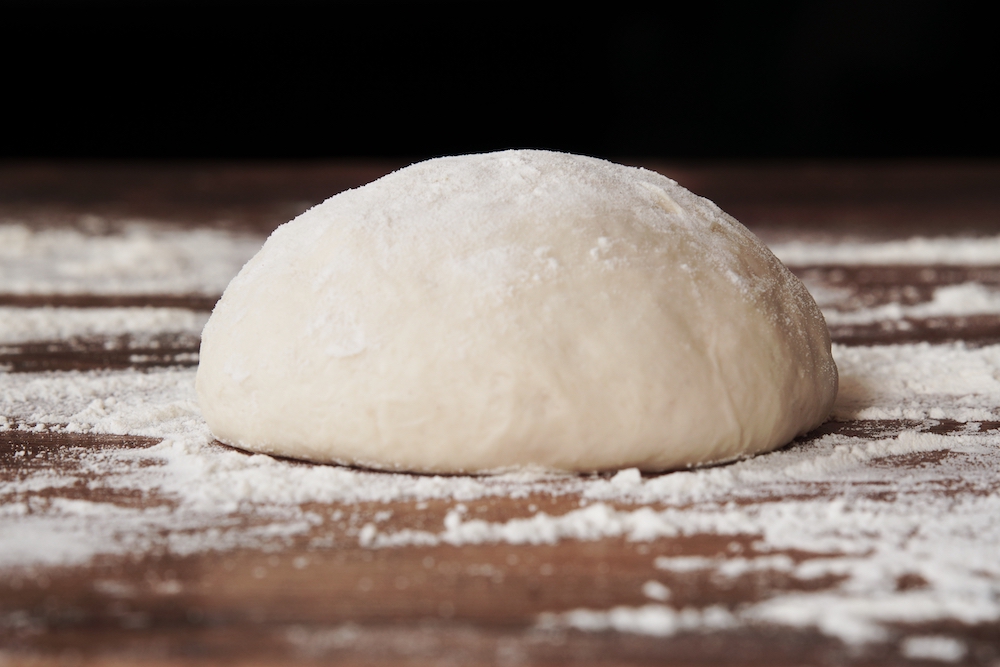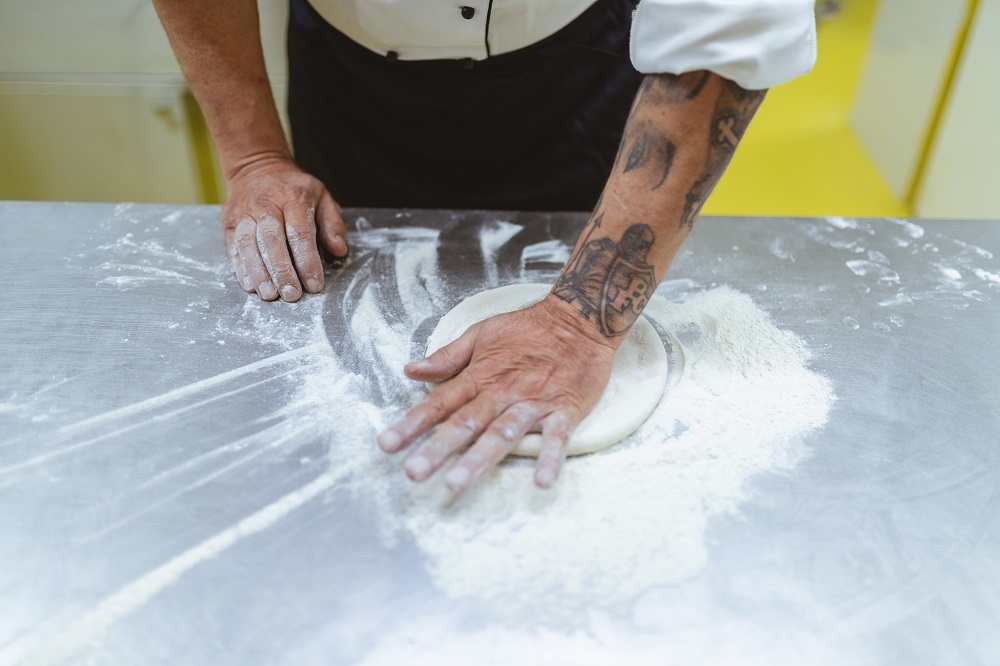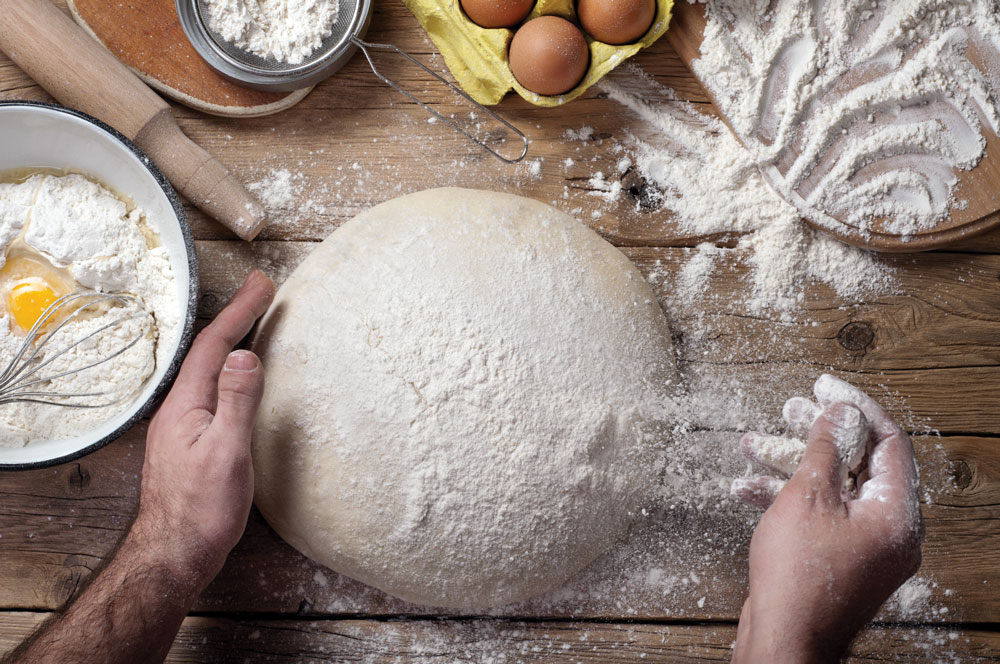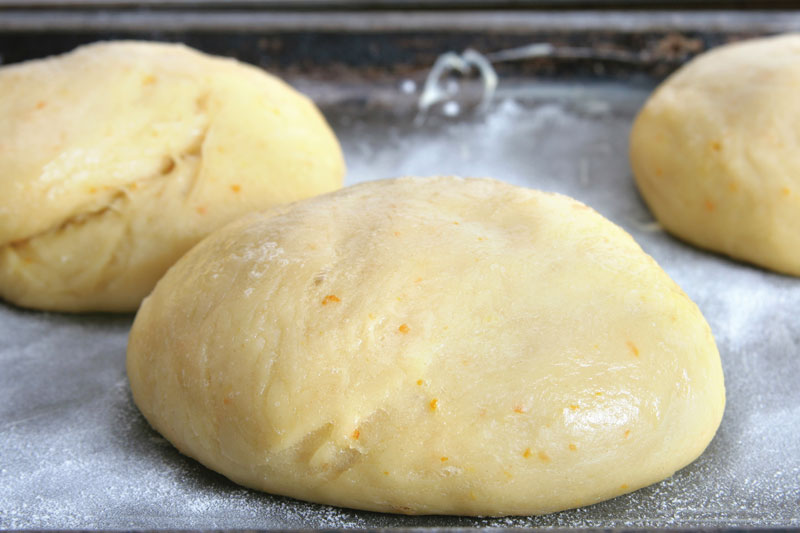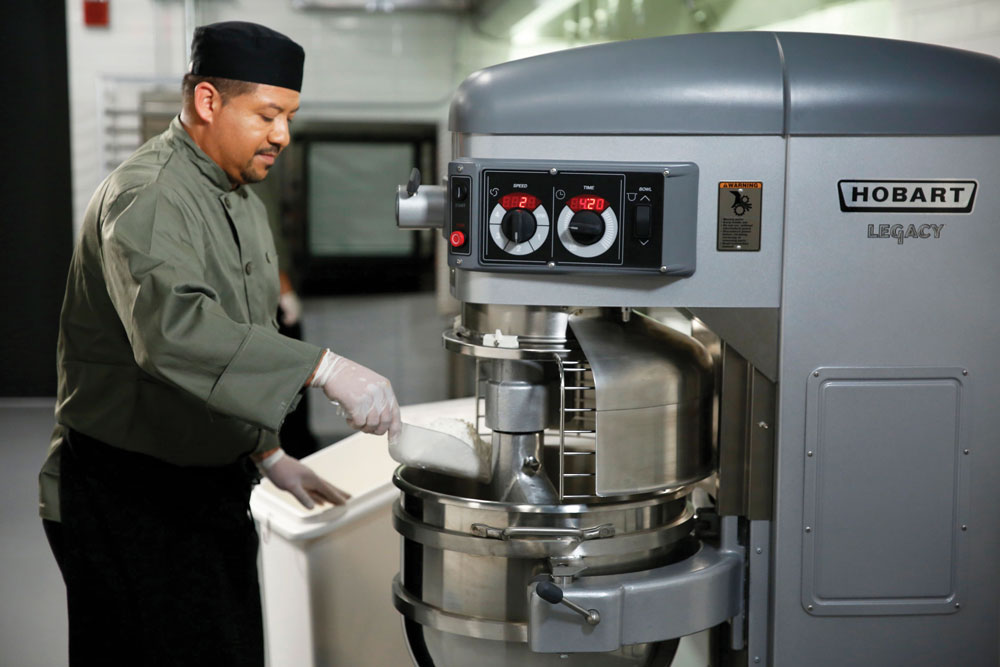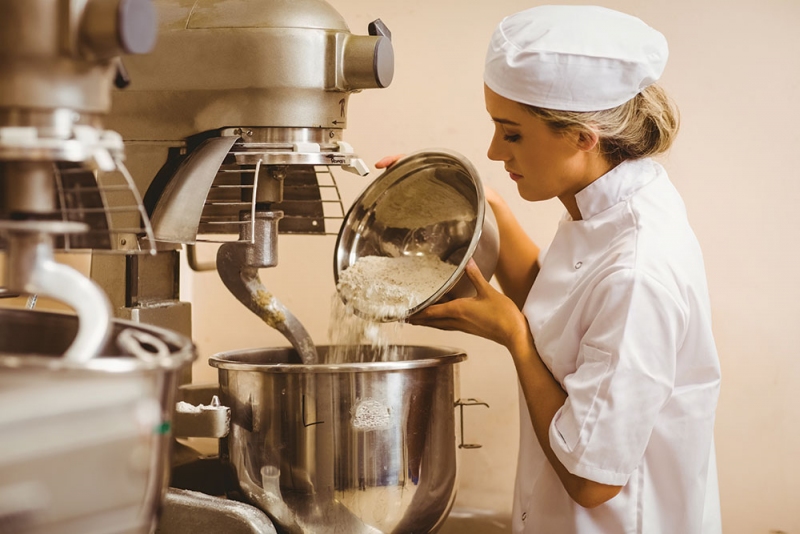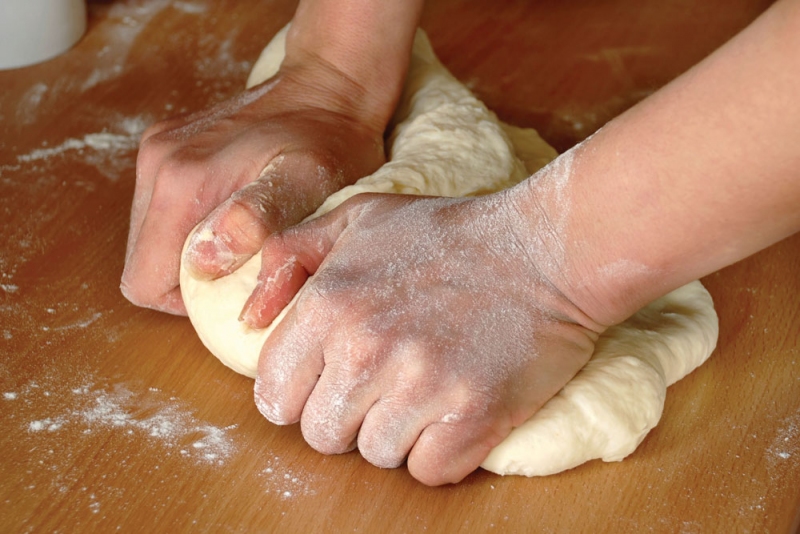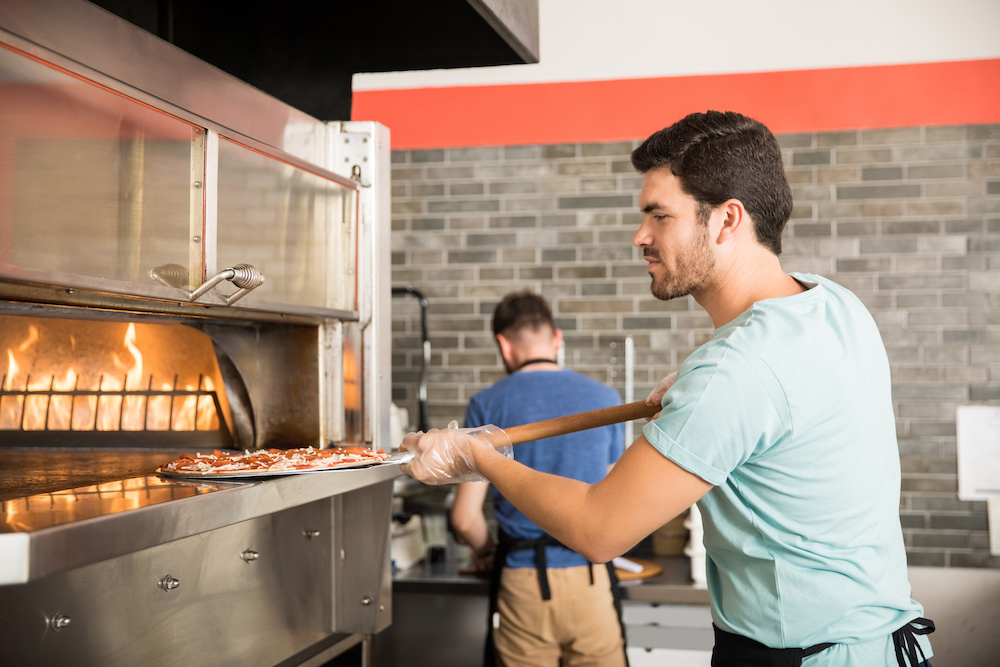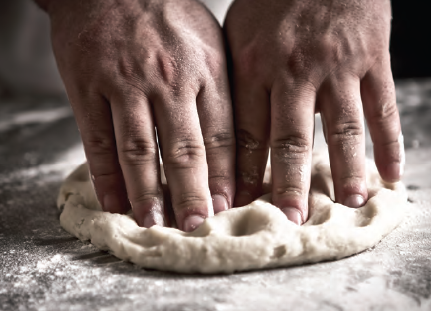 QUESTION:
QUESTION:
We recently changed over to using active dry yeast when making our dough. We hydrate it in 100°F water for 10 minutes, but we are unsure if we can add it to the remainder of the water, which is 65°F, or if we should keep it separate from the cold water.
ANSWER:
Once you have hydrated the active dry yeast (ADY), you can add it to the colder dough water without any problem. What I normally do is pour the hydrated yeast suspension into the mixing bowl; then, as I add the colder dough water, I pour it into the container in which I hydrated the ADY to rinse it out. This gets all of the yeast into the mixing bowl and helps clean the yeast bowl at the same time.
QUESTION:
We use fresh yeast in making our dough. There has been some discussion as to how long we should leave the yeast in the water before we add it to the dough.
ANSWER:
There seems to be a common misconception that fresh yeast/compressed yeast/block yeast needs to be suspended in water before it can be added to the dough. This is not the case at all. The best way to add compressed yeast to the dough is to crumble it into pieces as you add it to the mixing bowl. The yeast can be added directly to the flour just before you begin mixing. The normal mixing action will be more than sufficient to thoroughly disperse the yeast throughout the dough mass.
There is one exception to this—if you happen to be using a vertical cutter mixer (VCM). In this case, you will need to suspend the yeast in the water prior to adding the flour. This is best accomplished by first adding the water to the mixer bowl, then adding the compressed yeast, and running the mixer for several seconds to suspend the yeast in the water; then add the flour and remaining ingredients, and mix in your normal manner. This is required due to the extremely short mixing time of 70 to 90 seconds when using a VCM.
QUESTION:
What effect will adding baking powder have on my pizza dough?
ANSWER:
Baking powder is a complete chemical leavening system: Just add water and heat, and you can get a rise. Baking powder is comprised of both soda and acid components that, when hydrated and heated, will fully react, leaving a neutral pH (7.0) after generating all of its carbon dioxide. Its effect on flavor in non-yeast-leavened products, such as cakes and cookies, can be anything from minimal to characterizing. In yeast-leavened systems, the act of yeast fermentation creates certain acids as a by-product, and these acids will react with the soda portion of the baking powder. This results in an early release of carbon dioxide, so the full effect of the baking powder is not realized; but, even more importantly, the acid part of the baking powder is now left as a by-product that affects the taste, aroma and sometimes even the color of the finished crust. Typically, the resulting flavor is characterized like that of a baking powder biscuit with a slightly sharp or bitter aftertaste. To get around these issues, and still be able to use baking powder in yeast-leavened products, fat-encapsulated chemical leavening systems have been developed. These are complete leavening systems, meaning that upon complete reaction there is neither an acid nor alkali residual, so there is minimal impact upon the flavor or color characteristics of the finished crust.



